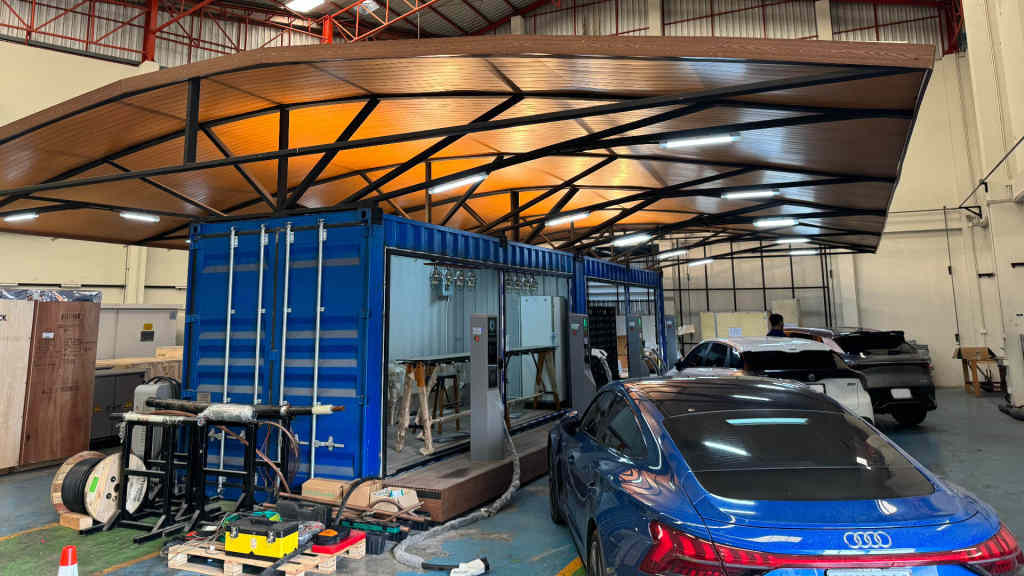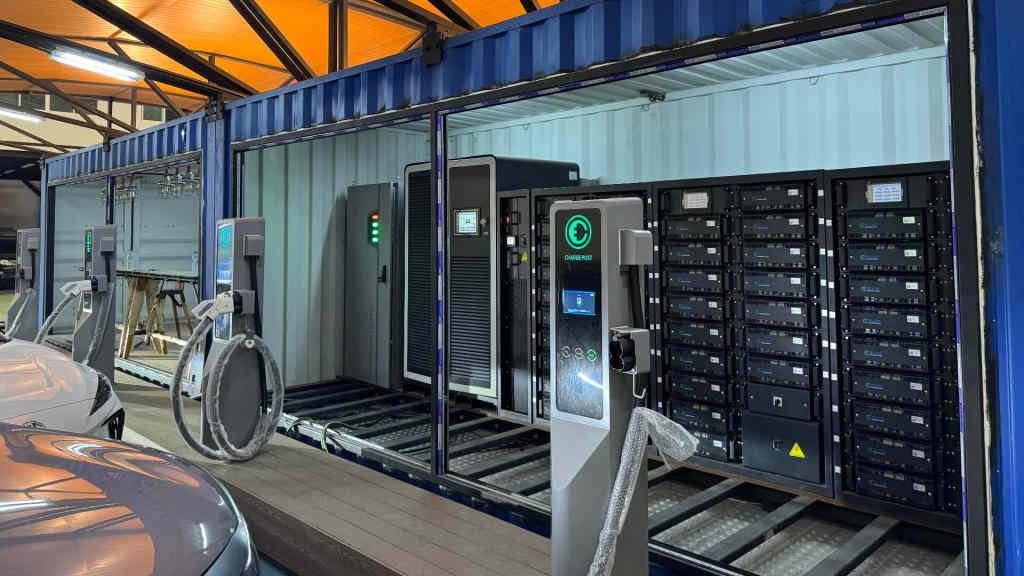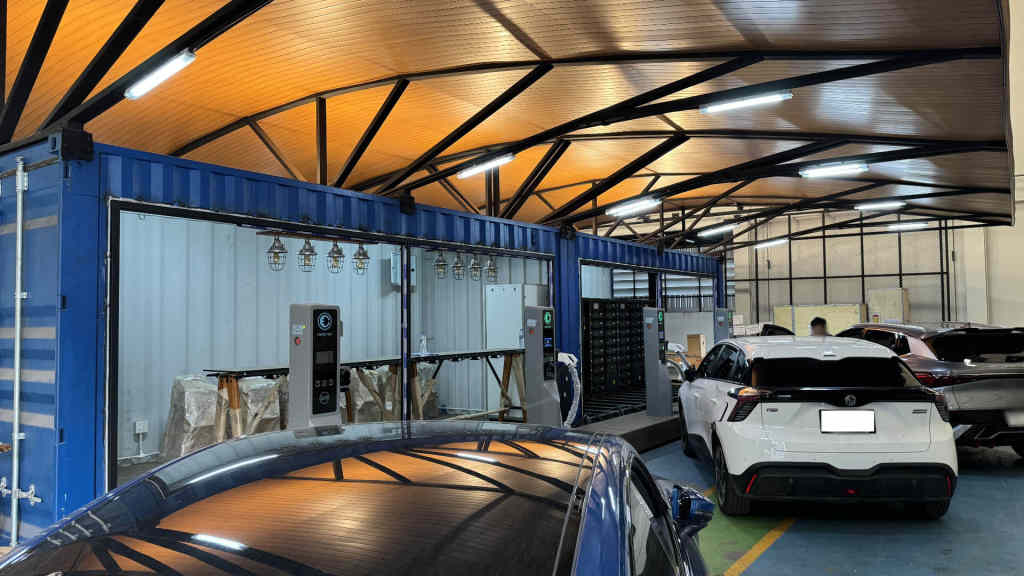Background
Our Thai client is a company specializing in power engineering and has extensive experience and technical strength in the energy field. Because of the importance of renewable energy in the future energy industry, the customer decided to build a demonstration solar storage and charging intelligent power station to demonstrate its technical strength and innovation capabilities in the field of new energy.
As the project initiator and implementer of this demonstration charging station, the customer aims to take this opportunity to promote the development of renewable energy in Thailand while providing more convenient and efficient charging solutions for electric vehicles. To achieve this goal, they cooperated with SCU. They adopted an innovative 40ft container solution, which demonstrated the customer’s pursuit of innovative technology and also reflected its commitment to environmental friendliness and sustainable development.

Solution
The solar storage and charging intelligent power station adopts a 40ft BESS container solution. The PCS power of the energy storage part reaches 250kW, using a 50kW MPPT module. The LFP battery capacity is 230kWh and consists of three battery cabinets. Half of the container space is used to place some system equipment, and the other half is set up as a user rest area.
The core of the hybrid energy storage system combined with solar & EV fast charger consists of four parts: photovoltaic part, energy storage part, EV charger part and energy management system (EMS) part. Among them, the charging stack, the energy conversion part of the photovoltaic part, the energy storage part and the energy management part are placed in half of the container. This layout has many advantages such as fast construction, short wiring distance and convenient maintenance.
The charging part is equipped with a 240KW DC EV charging stack, with 4 charging posts, uses a 250A charging gun, CCS2 standard, supports intelligent power distribution, provides all-weather charging services, and meets the fast charging needs of various electric vehicles. The entire system adopts a DC coupling scheme. The photovoltaic modules output DC power and then merge it through the combiner box. The MPPT photovoltaic inverter is connected to the PCS energy storage converter to achieve efficient energy conversion and storage.

Features
- This system uses photovoltaic power generation and stores the power in the energy storage battery. When needed, the energy storage battery supplies the power to the EV charger. Through the PV storage and charging system, clean energy such as solar energy is transferred to the car’s power battery. For use by vehicles. It not only has the advantages of new energy power generation being pollution-free, sustainable and green, but also makes up for the shortcomings of unstable new energy power generation, low power quality, and the need for expensive transmission and distribution networks. Combined with the electric vehicle charging function, it can perfectly solve the problem of new energy generation. Energy generation is at the power generation end, and the needs of the user end and the grid end are contradictory.
- The system uses DC fast charging technology to form a microgrid with photovoltaic power generation, energy storage, and smart charging facilities, and can achieve two operating modes: grid-connected and off-grid according to demand. In addition to receiving energy from photovoltaic solar panels, energy storage batteries charge when electricity prices are low and discharge when electricity prices are high. This reduces charging costs and can cut peaks and fill valleys. It also makes up for the shortcomings of discontinuity in solar power generation. When the power grid is out of power, the solar BESS charging station all-in-one solution can use off-grid operation mode to emergency charge new energy vehicles.
- The solar storage and charging system is managed and deployed by the energy management system (EMS). The energy of each unit in the system is allocated according to the optimal principle, which can realize equipment monitoring, energy statistical analysis, energy management, energy storage scheduling, event alarm, and report management. and other functions. The EMS system is powerful. Supports important functions such as remote monitoring, real-time monitoring, data transmission, and storage.
- The rest area of the PV storage and charging intelligent power station provides a comfortable and quiet environment, allowing electric vehicle owners to relax, rest, or engage in other activities while waiting for charging, improving user experience and satisfaction. They can exchange charging experiences and share information with other car owners here, which enhances the interaction and sense of community among users, further promoting the activity and attractiveness of the charging station.

Summary
The solar storage and charging intelligent power station can also solve the problem of stable output of photovoltaic and wind power generation, as well as meet the needs of dynamic balancing of urban electricity loads. This system combines renewable energy photovoltaic power generation with energy storage systems, giving full play to their respective advantages, achieving the integration of renewable energy, and increasing the penetration rate of renewable energy. During peak power consumption, the system can effectively reduce the impact of high voltage and large current on the distribution network when electric vehicles are overcharged, meet the fast charging needs of various types of electric vehicles, and further promote the relationship between renewable energy and electric vehicles’ organic combination.
